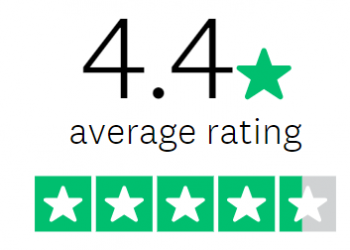Recently I had the great pleasure of catching up with James McFall, Lifespan licensee, Managing Director of Yield Financial, and recent inductee to the FS Power 50, top Australian influential Financial Advisers 2021. We enjoyed a lively discussion on why a focus on your clients is central to building a successful advice practice.
James believes listening to what your clients want and providing personalised solutions are the most important aspects of being a good financial adviser. And creating a team culture that’s 100% founded on creating fantastic client experiences is the most important aspect of running a successful advice practice. As he puts it, “Our first team value is clients come first. And we’re always talking about client experience. Basically, everything, always, is centered around that.”
Having always known he wanted to run his own business, with early dreams of a landscaping business, James’s career has seen him grow from mowing neighbours’ lawns, to helping clients achieve their own real estate and financial dreams. “Ultimately, what drew me to financial planning was that I get a lot of satisfaction out of helping people”. In whatever he has undertaken, from trading into focusing on property and then into, more broadly, the retirement space, his focus has always been firmly on understanding his clients’ needs and delivering an outstanding client experience.
Before you can understand what your clients need, you need to first understand who your clients are. I was interested to discover how James had gone about defining who his target market is, and what made him focus on the retirement sector once he moved away from the property business.
“We looked at our clients. Progressively, as the years have gone on, we’ve looked at where we are attracting our most interest, who the clients are that we enjoy working with the most, and also from a point of view of where it’s most economic. And where the greatest need is. That process has been a pretty big evolution, but now we’re really clear on who our target market is. And the closer we’ve become to defining it, the more rapid our traction has become. So we basically target, or can help best, local professionals over 40, to help them retire securely.”
It can sometimes be challenging getting advisers to understand that by defining your target market you are giving yourself more opportunity, not less. When advisers first start out many aren’t prepared to go out and say this is my target market, this is who I want to work with exclusively. However, as James has found, at the end of the day, if you do define your target market, the benefits that you get from it over time add up exponentially. The more focused you are on your target clients and your message, the better you can assist them. You understand them more intimately, and because of this you can deliver more value to them, and ultimately you are more valuable to them.
“I think the reality is that we’ve got a level of scale now that allows us to still be that broad. Because it’s still quite broad. I think that if I was starting again, I’d be a lot more specific and maybe broaden from there. For example, I don’t know of a financial planning firm that’s focused on helping marketing professionals. Wouldn’t that just talk directly to you?” If you’re the only person doing it, there are plenty of potential clients that would value what you offer.
It is one thing identifying who your target market is, but what did James believe was the key to managing his business growth, without compromising the client experience?
“I think that strong processes and team training and alignment is what is essential to making the client experience repeatable. So to support that and to help ensure that client experience, we’ve process mapped every step of our advice process in our database AI. So that means that, interchangeably, the different people in the team that are responsible for that step, can’t miss it. We have developed email templates for each step of the advice process. We’ve also written a financial processing eBook, that’s an introduction to what to expect pre-first meeting. We’ve also created a fee matrix that personalizes our quoting, so that means that whoever is providing a quote for our client, it’s going to be priced the same. And then we’ve got a strong financial plan template and the technology that underpins it. So that is what makes it repeatable”.
James has also found the integration of technology invaluable. Everything from Xero for business to LastPass for passwords. Even before COVID, Yield were using Cloud computing, which made switching to working from home so much easier. “We’ve also found Revex amazing and we’re getting more and more value out of that”. All these technological solutions help to manage business growth more efficiently and effectively, without compromising the client experience.
“Over time there have been so many things that we have learned from, but one of the best things that you can do is to implement position descriptions”. In order to succeed in growing your team and your business by delivering exceptional client experiences, this becomes increasingly important. “If people aren’t really clear on what you are asking them to do, then you’re not really setting them up for success. I think scaling a team is the hardest thing and in order to do that successfully, you have to invest the time to get the process right.”
“I’ve been in the business for more than 15 years now. And in that time, we’ve built a good strong loyal client base. We have a Net Promoter Score (NPS) feedback system which we regularly ask for, and our current NPS is 71, and we use that feedback as part of our incentive scheme”. This all helps to ensure the focus of the team is always on delivering a great client experience, gathering feedback, and making incremental improvements. Focus on great client outcomes is delivering great results, not only for Yield’s clients but for James and his team.
James summed it up by saying “I’m proud of the life that I’m making for myself and my family, the team culture we’re creating and the business that we’re building.”
Lifespan Financial Planning is proud to support James and his team as their licensee. To find out more about how you can join our award-winning team, please call us on (02) 9252 2000.
















